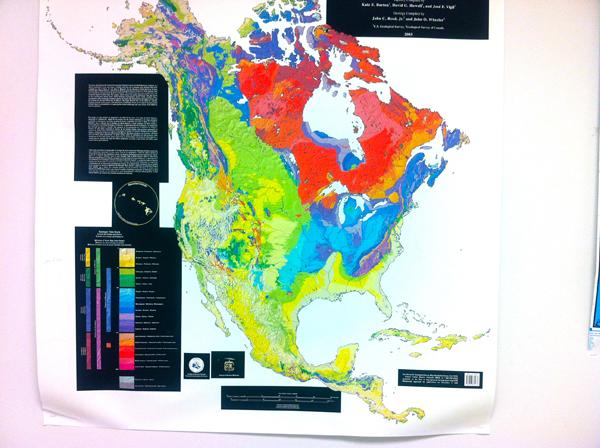
Right now, SMU may not be known as a nationally recognized research institute, but the university’s Geothermal Laboratory is looking to change all that.
“Because geothermal energy is in the ground, it’s not on people’s minds—it’s out of sight out of mind,” Staff Researcher Maria Richards said. “This generation could really change that because they share so much.”
The U.S. Energy Information Administration describes geothermal energy as energy collected from hot water or steam reservoirs deep below the earth’s crust. As energy consumption continues to increase and traditional resources become depleted, alternate, sustainable energy sources such as geothermal technology become increasingly important.
SMU’s Geothermal Lab identifies and maps geothermal resources around the world, connecting knowledge of the energy source to consumers and commercial developers.
“We educate the public about geothermal energy in hope that we can push for better energy policies and gain the interest of potential investors,” graduate student Ramsey Kweik said. “Unlike wind and solar, geothermal energy is seldom mentioned in the media and has not received the recognition it deserves.”
National Public Radio thinks so too. NPR recently featured SMU’s Geothermal Lab in a State Impact report detailing how Texas’ numerous oil and gas wells could be a hot spot for geothermal energy. But according to the radiocast and Geothermal Lab Researcher Maria Richards, limited funding often dismantles geothermal projects.
“They made (the power plant) work, they proved it was successful, and then they dismantled it because they didn’t have funding to keep the project going,” Richards told NPR.
Fortunately, SMU’s Geothermal Lab has not always been so strapped for cash. Since its inception, the program, nearly 42 years old, has been awarded over $9 million in research grants from the U.S. Department of Energy, National Science Foundation, and other sources.
Tech giant Google and the federal government took an interest in geothermal research a few years ago. Google granted the lab half a million dollars in 2008 and President Obama announced a $350 million stimulus for geothermal energy projects in 2009.
For SMU, the additional resources allowed more room for research.
“We’re using data collected from the Google grant and building a national database for the Department of Energy,” Richards said. “We [also] complete research for companies who come to us with something they need done for a specific site or location.”
Students working in the lab are assigned projects across the nation in Oregon, Nevada, Oklahoma and beyond for large organizations like the U.S. Navy and Davenport Oil & Gas. Research conducted by graduate student Andres Ruzo has lead him on an adventure in Peru for National Geographic.
“One day I could be working in the lab, the next day I could be… in the desert temperature-logging wells, in the Andes searching for mining holes, [or] in the Amazon rain forest studying the geology of the area,” Ruzo shared on his National Geographic profile.
With geothermal energy available around in the world, the possibilities for finding and harvesting sustainable energy are endless. Kweik, working with Hunt Oil Company in East Texas, describes the industry and field as good business.
“We get to play outside and get paid. As a base load renewable energy source, geothermal energy is by far the most efficient and the most reliable of the other renewable resources,” Kweik said.
More information about geothermal technology is available online at energy.gov. Students of all majors and disciplines are encouraged to visit the Geothermal Lab in Heroy hall. The lab will host a public conference and workshop exploring topics relevant to geothermal energy next semester.











